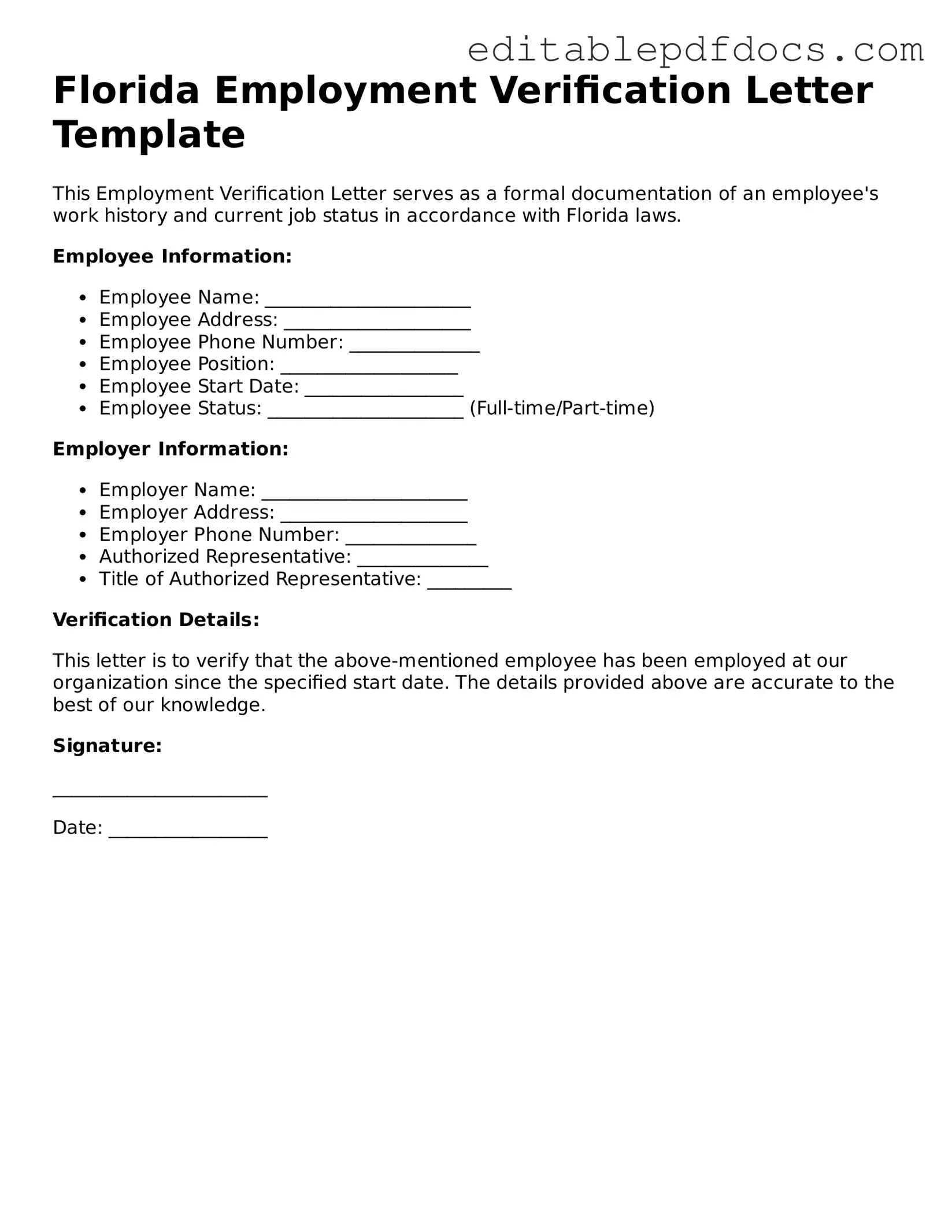Employment Verification Document for Florida
The Florida Employment Verification form is a document used to confirm an individual's employment status and history within the state. This form serves as a vital tool for employers, employees, and various agencies requiring proof of employment. Understanding how to fill out this form accurately is essential for ensuring that all parties have the necessary information.
Ready to fill out the Florida Employment Verification form? Click the button below to get started!
Open Editor Now
